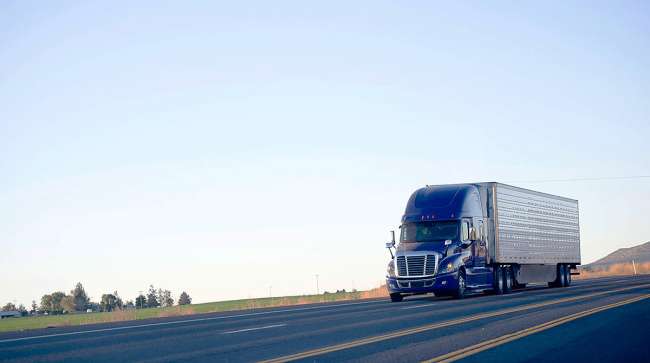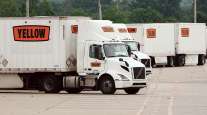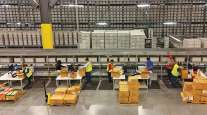Staff Reporter
Logistics Costs Increase to $1.63 Trillion in 2019

[Stay on top of transportation news: Get TTNews in your inbox.]
Business logistics costs increased marginally in 2019 as conditions in the sector normalized, but the COVID-19 pandemic has brought uncertainty to the outlook for 2020, the Council of Supply Chain Management Professionals announced in a June 23 report.
The 2020 CSCMP State of Logistics Report found that United States Business Logistics Costs increased 0.6% to $1.63 trillion last year, a figure that comprised 7.6% of the nation’s total $21.43 trillion gross domestic product.
The marginal growth in costs last year reflected a return to balance for the logistics sector after soaring costs in 2018, said Michael Zimmerman, a partner with A.T. Kearney, which co-authored the report.
@cscmp's 31st Annual #StateofLogistics Report is now available. To access the full report, please visit us at: https://t.co/45jdznDLwd. #ResilienceTested #SofL @kearney @PenskeLogistics pic.twitter.com/wIUnb2HIJw — cscmp (@cscmp) June 24, 2020
The report noted that last year started with a high inventory to sales ratio that remained relatively elevated later on. The fast economic growth and capacity shortages that year had driven logistics costs to the highest percentage of GDP since 2008.
The report notes that where costs fell, it was generally due to volume declines in a slowing economy. Some easing of prices as carriers tried to sell excess capacity was also to blame. When costs increased it was largely due to momentum carrying over from 2018.
“This is a lower rate of growth in GDP, a combination of the effects of overcapacity driving down rates in some sectors and improved productivity,” Zimmerman said.
Last year’s $1.63 trillion in costs was closer to historic averages as carriers reined in some capacity and the industry positioned itself for what looked like a solid 2020.
The USBLC for the motor carriers sector grew 3% to $680.4 billion in 2019, driven primarily by growth in private and dedicated fleets. Carrier support activities likely became more efficient but also were cut back with the drop in volumes, the report said.
COVID-19 hit U.S. logistics at the end of Q1 2020 and the resilience test began. The logistics industry is still adapting.
Michael Zimmerman
Broken down by sector, USBLC data shows full truckload costs increased by 1.4% while less-than-truckload costs increased 1.3%. Both were less than the 2019 inflation rate of 2.3%.
A 5% increase in private and dedicated fleet costs drove the overall motor carrier sector to the overall 3% cost increase.
Road freight was the largest segment of domestic logistics spending in 2019. It began slowing down last year after years of scarce capacity and increasing rates reversed in favor of shippers, who seized buying power and negotiated lower rates — often at the expense of carriers’ profitability, the report said. Freight rates dipped year-over-year for six months straight last year as demand declined while supply increased.
Overall load posts on the spot market fell by 27% from 2018 to 2019. The report noted that the load-to-truck ratio was more than 60 when prices reached their highest in mid-2018. For much of 2019 it was below 30.
Logistics costs increased for parcel, water and pipeline carriers but fell for rail and air. For rail, a cost decline of 1.4% was driven mostly by declining volumes, especially in intermodal. Costs for the water transport sector grew by 3.1%.
CSCMP warned the impact of the coronavirus has decimated supply chains, scrambled logistics capabilities and destroyed huge swaths of demand in 2020. The global measures taken to reduce its further spread compounded those issues.
The report noted that there have been some optimistic signs. It points to the growth of e-commerce, which was amplified by the online shopping of those sheltering at home. The report also noted that some carriers maintained profits despite declining volumes in 2019. This might suggest a commitment to pricing discipline that may help them survive 2020.
The consulting firm Kearney and Penske Logistics contributed to the research and preparation of the report. Reports from CSCMP have looked at the economy through the lens of the logistics sector for more than three decades.
“COVID-19 hit U.S. logistics at the end of Q1 2020 and the resilience test began,” Zimmerman said. “The logistics industry is still adapting. The USBLC breakdown shows flat or declining costs across the modes and nodes as volume dropped in air, road and rail. But e-commerce and faster delivery expectations drove parcel and warehousing higher.”
Want more news? Listen to today's daily briefing:
Subscribe: Apple Podcasts | Spotify | Amazon Alexa | Google Assistant | More





